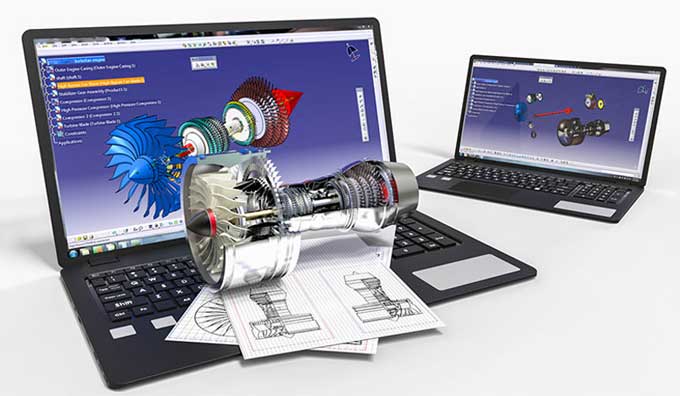Platforms for digital development: Automated design

This is a field in which contains developed knowledge, theoretical and technical documents, and digital tools as the center of his theory and practice, working toward industrializing the industry of AEC (Architecture, Engineering, and Construction).
Design automation automates design work and allows designers to design and develop products more quickly because no manual work is required.
Building Information Modeling (BIM) is a 3D-based approach that is used in the built environment instead of the traditional 2D-based Computer-Aided Design (CAD).
A 3D modeling tool can be classified into two broad categories: generic and parametric.
1. Parametric Modelling:
In contrast, parametric modeling is most commonly used for more detailed designs and construction documents. Revit and ArchiCAD are popular tools used in this process.
2. Generic Modelling:
Conceptualization and early design iterations are primarily done with generic modeling. This is commonly done with Rhino and Sketchup, two tools commonly used by architects and designers.
The levels of automation of design
A. Parametric modeling is the first level of Design Automation. In parametric modeling, parameters are used to control the behavior and appearance of objects within 3D models, such as buildings.
B. In addition to Design Automation, Computational Design is another level. 3D Modeling tools do not offer all the capabilities that computational design does.
The process involves manipulating data to generate geometries and objects with the help of computers and mathematical operations. Computational Design is widely used in architecture/design for visual programming.
As opposed to text-based programming languages, visual programming languages let programmers describe processes in a manner that makes sense to humans. The advantage of Visual Programming software is that you can program without having to write any code. Those who are new to Computational Design will find this book helpful as a starting point.
Other Factors
The Grasshopper plugin for Rhino software was one of the first to introduce visual programming to architecture.
Autodesk, Dynamo is another Visual Programming tool. Several Autodesk products are compatible with Dynamo, including Revit. Projects use it throughout the entire design and delivery process.
Dynamo Player is a Revit plugin that allows Dynamo scripts to be executed without requiring access to the Dynamo interface. The use of Design Automation in this application has become increasingly popular in recent years. To improve the workflow of their documentation, companies write scripts to automate redundant tasks.
C. Design Automation reaches its third level with Generative Design. The goal of generative design is to describe a design problem to a computer using a set of tools. You can then choose the best solution from a list of possible ones that the computer generates.
By using this method, the designer is able to think outside the box in a shorter amount of time than using a traditional method.
As visual programming languages like Grasshopper and Dynamo gain in popularity, simulation tools are being created as plug-ins that are integrated into the generative model.
Galapagos is Grasshopper's built-in tool for optimizing, and it is the easiest way to get started. Models can be quickly tested during the development process using this tool.
A Dynamo model can be optimized by the Refinery plugin in Dynamo. With Revit 2021 upward, subscribers to the Autodesk AEC Collection can access the Generative Design Primer, which is based on Refinery beta.
To learn more, watch the following video tutorial.
Video Source: Tristar, Inc.
The Role of BIM
The process of designing iterations can be overwhelming, especially for young professionals. We must focus on producing more innovative and human-centric designs in our increasingly complex world as the guiding star of Parametric, Computational, and Generative Design. There should be no siloed approach to these design iterations.
By using a BIM workflow, we can co-design and communicate with other stakeholder groups - including the end-users and the client - in real time.
With modern cloud-based collaboration platforms like BIMx, Autodesk Construction Cloud, Procore, Trimble Connect, etc., projects today have a Common Data Environment.
With parametric, computational, and generative design, we produce information-rich models as well as faster designs. Constructing and managing the facilities becomes easier as a result.
Final Thoughts: Artificial Intelligence and Algorithms are projected to replace humans entirely and control the design process in the near future under the concept of Design Automation. The truth, however, is far from this. According to what we have seen.
1. When Generative Design is conducted, metrics such as objectives and constraints must be set up by humans.
2. Automated scripts are written by humans, and plugins are built and improved by humans.
3. Analyzing the results of optimizations and improving on them requires humans.
Consequently, Design Automation leverages intelligent tools to handle repetitions and redundancies, unleashing creative designs beyond the latent creative potentials of the human brain.
These tools and technologies should not be avoided by designers. They should instead embrace them to make life easier for themselves.



